Home Page > Evolve > Photo Studio > Studio Workflow: From Booking to Delivery
Running a successful photo studio means more than just taking great photos. It’s about creating a smooth, professional experience for your clients from the moment they first hear about you all the way through to delivering their final images.
A well-organized workflow not only saves you time and stress but also builds trust, encourages referrals, and grows your business.
In this guide, we’ll break down the essential stages of a studio workflow, share best practices, and highlight some of the systems we use at John Mak Photography (JMP) to keep everything running seamlessly.
Table of Contents
1. Lead Generation and Client Booking
Before the camera even comes out, you need a steady stream of potential clients. The key here is visibility and trust.
Best Practices:
Online Presence: Maintain an active website, social media channels, and portfolio platforms to showcase your style and attract your target audience.
SEO and Local Listings: Optimize your site for search engines and claim your business on Google My Business and Yelp to increase local discoverability.
Content Marketing: Share behind-the-scenes stories, tips, and client testimonials to build credibility and engagement.
Referral Program: Encourage past clients to refer friends with incentives or discounts.
Paid Ads: Use targeted Facebook, Instagram, or Google ads to reach specific demographics.
Systems We Use at JMP:
We use a CRM (Customer Relationship Management) system integrated with lead generation tools. New inquiries automatically enter the CRM, triggering automated welcome emails and follow-ups to nurture the lead.
Our CRM tracks the entire client journey, from first contact through booking, payment, and final delivery, so no client falls through the cracks.
2. Client Communication and Scheduling
Once a lead is interested, clear and timely communication is critical.
Best Practices:
Automated Scheduling: Use tools like Calendly or Acuity Scheduling so clients can book sessions online based on your availability—no back-and-forth emails needed.
Automated Reminders: Send appointment confirmations, reminders, and preparation tips automatically via email or SMS.
Contracts & Deposits: Use digital contract platforms such as HelloSign or Docusign, and set up secure deposit payments via Stripe or PayPal.
Systems We Use at JMP:
Our CRM integrates with scheduling software and payment gateways, automating contract delivery and deposit collection.
We also set up personalized workflows so clients receive custom prep guides based on their session type (fashion, portraits, brand photography).
3. The Photo Shoot
This is your creative moment but having an organized approach here keeps things efficient.
Best Practices:
Prepare your gear and studio ahead of time with checklists.
Keep clear session timelines and shot lists to stay on track.
Use tethered shooting to instantly view images on a monitor for quick feedback.
Engage clients with clear direction and a comfortable environment.
4. Post-Production and Editing
Editing can be time-consuming but streamlining this step ensures faster delivery.
Best Practices:
Use batch editing presets and automated tools in Lightroom or Capture One to speed up workflow.
Schedule dedicated editing time to avoid distractions.
Backup files immediately and organize folders consistently.
5. Client Galleries and Image Delivery
Making image delivery smooth and professional enhances client satisfaction.
Best Practices:
Use client gallery platforms that allow previews, downloads, and print ordering.
Offer multiple delivery options: digital downloads, USB drives, or prints.
Include clear instructions on downloading and usage rights.
Systems We Use at JMP:
We use Pixieset as our primary client gallery and business management platform. Pixieset allows us to create branded galleries, automate client notifications, and handle print sales and downloads effortlessly.
Pixieset’s integration with our CRM keeps client data and orders synced, simplifying accounting and follow-ups.
6. Follow-Up and Client Retention
A good workflow doesn’t end at delivery.
Best Practices:
Send thank-you emails with feedback requests and referral reminders.
Schedule seasonal or milestone check-ins to offer new sessions or promotions.
Maintain an email newsletter to keep your audience engaged.
Systems We Use at JMP:
Our CRM automates post-session follow-ups and feedback collection, triggering workflows to nurture repeat business and referrals.
Bonus Tips for a Smooth Studio Workflow
Cloud Storage and Backup: Use services like Google Drive, Dropbox, or Backblaze to securely store and back up your images and documents.
Financial Management: Use invoicing and accounting software like QuickBooks or FreshBooks integrated with your CRM.
Team Collaboration: If you work with assistants or stylists, use project management tools like Trello or Asana to assign tasks and track progress.
Summary
A streamlined studio workflow combines smart tools and clear processes to deliver a professional, enjoyable client experience while saving you time and headaches. From generating leads and automating communication to delivering stunning images with ease, each step matters. Systems like CRM automation, visibility through online marketing, and platforms like Pixieset help create a workflow that supports growth and excellence.
If you’re ready to build or refine your studio workflow, start by mapping your current process, identify bottlenecks, and gradually implement tools that automate repetitive tasks. Your clients—and your sanity—will thank you.
Disclaimer: The information provided here is intended as guidance only. You are solely responsible for any choices or outcomes based on this content. No warranties or guarantees are made, and no liability is accepted.
